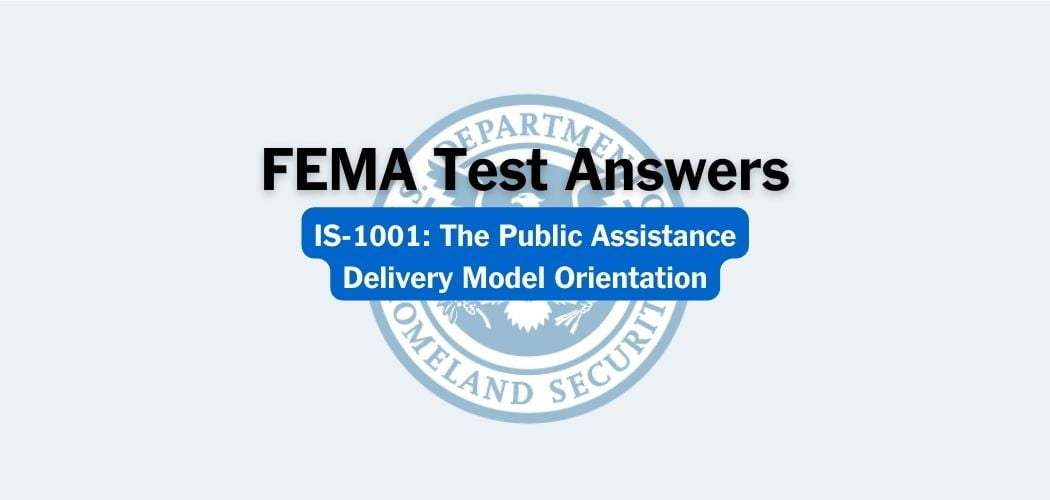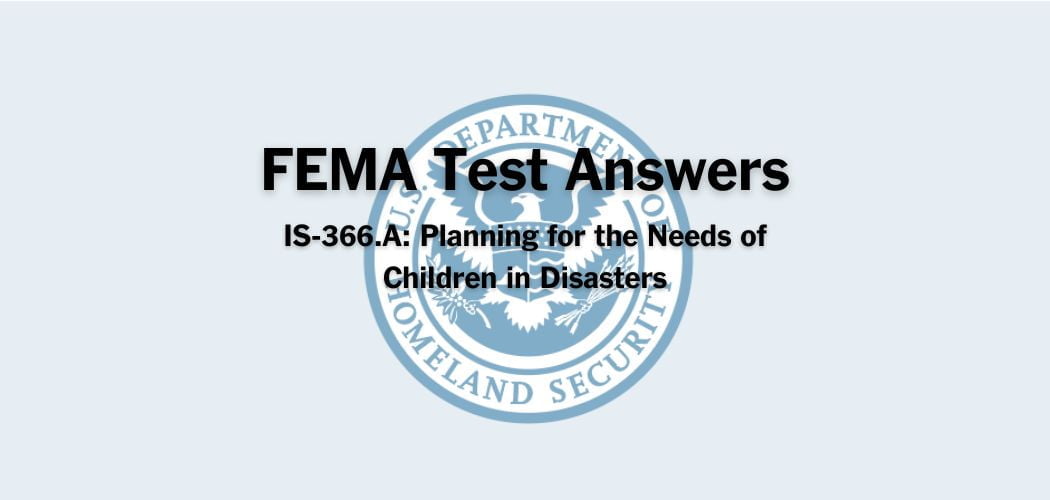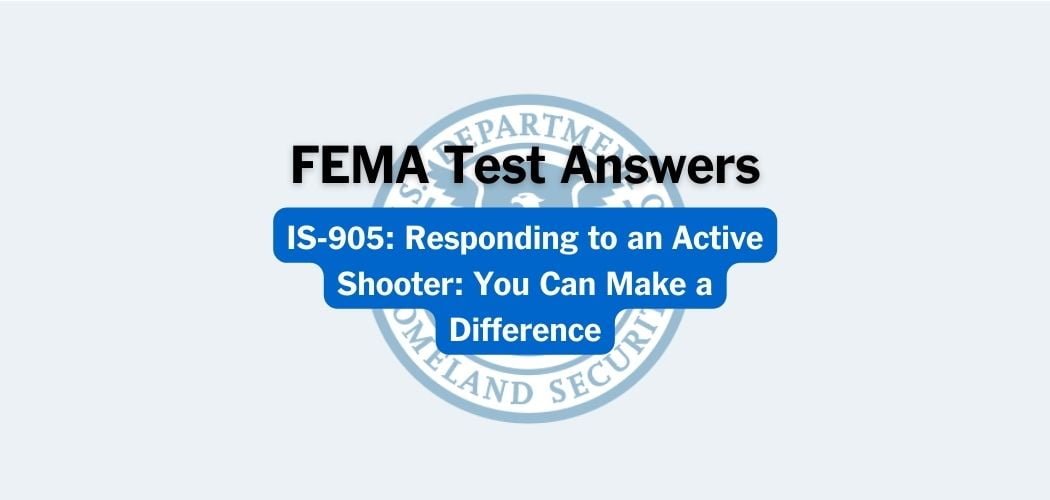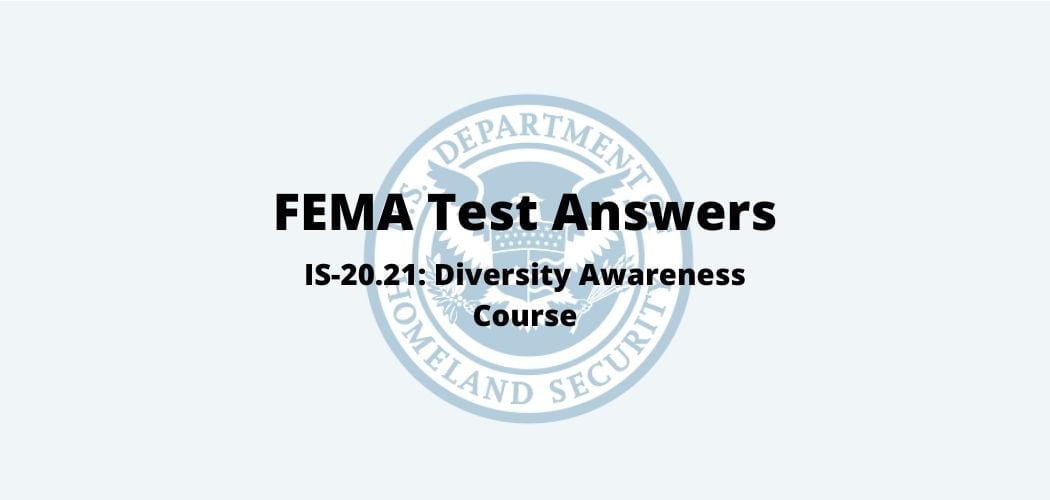Overview: The FEMA IS-1010 course was published on 2/28/2019 to provide an overview of Emergency Protective Measures. This course will also describe routine documentation measures that support the application for reimbursement of emergency protective measures.
By the end of the IS-1010 course, State, Local, Tribal, and Territorial Applicants and Recipients will be able to accurately capture emergency protective measures activities and document costs concerning actual overtime based on payroll policies, equipment usage, and reasonable materials purchases.
FEMA IS-1010 test answers
Each time this test is loaded, you will receive a unique set of questions and answers. The test questions are scrambled to protect the integrity of the exam.
Question 1. What is an Applicant’s best option for organizing documents prior to an incident?
A. Storing them in filing cabinets
B. Writing them on a note paper
C. Storing them on a personal computer
D. Uploading them to Grants Portal✅
Question 2. What best practice helps Applicants distinguish emergency activities from day-to-day and steady-state operations when requesting reimbursement for Emergency Protective Measures?
A. Sharing knowledge with other communities
B. Storing documents in filing cabinets
C. Using a reliable tracking method✅
D. Submitting incomplete timesheets
Question 3. What is an example of sharing knowledge with other communities?
A. Hosting regular civic meetings with partners✅
B. Separating force accounts from contract costs
C. Filling out an organization’s form that records activities
D. Keeping up-to-date versions of documents in Grants Portal
Question 4. An example of an Emergency Protective Measure that saves lives and protects public health and safety is:
A. destroying a damaged facility
B. evacuation and sheltering✅
C. rebuilding a facility
D. rebuilding a damaged facility
Question 5. Emergency Protective Measures under the Public Assistance Program must:
A. restore a damaged facility to its pre-disaster design and function
B. include both obligated dollars and approved dollars
C. fall within work categories C-G
D. eliminate or lessen immediate threats to lives, public health, or safety✅
Question 6. FEMA may require validation by local, State, Tribal, or Territorial government officials that a threat exists, including identification and evaluation of the threat and:
A. proof that the measures will only be temporary.
B. an example of the Permanent Work that will be done.
C. recommendations of the work necessary to minimize the threat.✅
D. staffing concerns related to the work to be performed.
Question 7. Throughout response operations, it is important to _____ activities that are potentially eligible for reimbursement under the Public Assistance grant program.
A. search for
B. transfer
C. track✅
D. give away
Question 8. Medical care and transport is an example of:
A. saving lives and protecting public health and safety✅
B. emergency protective measures conducted by private nonprofits
C. protecting improved property
D. other urgent governmental services
Question 9. Some activities that may qualify as Emergency Protective Measures include search and rescue, evacuation and sheltering, and:
A. firefighting.✅
B. construction.
C. demolition.
D. paperwork.
Question 10. All of the following statements are true except:
A. Emergency Protective Measures that eliminate or lessen an immediate threat to lives, public health, and/or safety do not have to be cost-effective.
B. All projects must be cost-effective for Applicants to be eligible for grant funding from the Public Assistance program.✅
C. Certain projects must be cost-effective for Applicants to be eligible for grant funding from the Public Assistance program.
D. Emergency Protective Measures that eliminate or lessen an immediate threat to protect improved property must be cost-effective.
Question 11. Insufficient call logs is an example of:
A. an urgent governmental service
B. a common Applicant mistake✅
C. an Applicant best practice
D. protecting improved property
Question 12. Extracting water and clearing mud, silt, and other accumulated debris from eligible facilities, if the work is conducted expeditiously for the purpose of addressing an immediate threat, is an example of:
A. saving lives and protecting public health and safety
B. emergency protective measures conducted by private nonprofits
C. protecting improved property✅
D. other urgent governmental services



